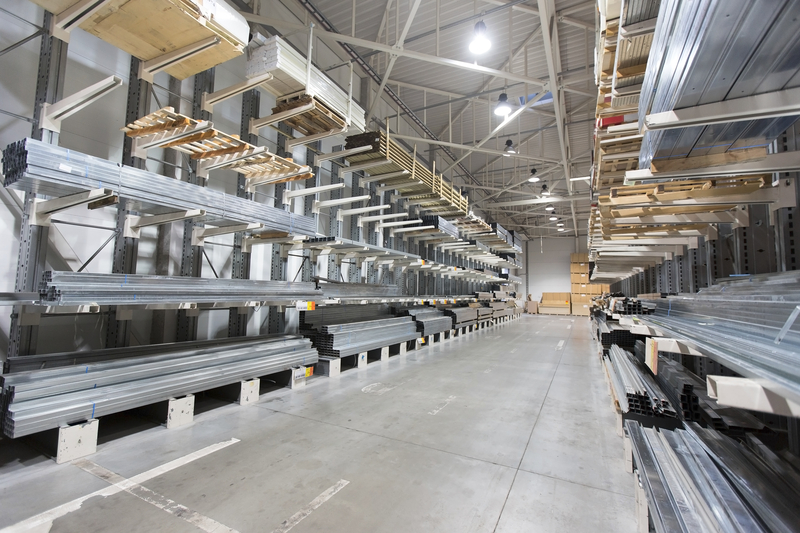
Aluminum extrusions are a principal part of modern construction – these products blend strength, weight, and formability. Nevertheless, not all aluminum alloys are ideal for extrusion. Normally different alloying elements are crucial for the shaping of the extruded product.
The Aluminum Association (AA) naming system designates aluminum alloys and aluminum with a four-digit numerical code.
● 1XXX Series: Pure Aluminum (99% or more Al content) - Excellent formability and weldability with limited strength.
● 2XXX Series: Copper (Cu) Alloys - Fair strength, higher corrosion resistance.
● 3XXX Series: Manganese (Mn) Alloys - have a combination of strength, corrosion resistance, and flexibility.
● 4XXX Series: Si Alloys - Good weldability and brazing for applications of high brazing strength.
● 5XXX Series: Magnesium (Mg) Alloys - Possess good strength-to-weight ratio and corrosion resistance, consequently, suitable for marine and transportation applications.
● 6XXX Series: Magnesium and Silicon (Mg & Si) Alloys - Most used extrusion alloys, they are good in strength, they are very workable, and they have decent corrosion resistance.
● 7XXX Series: Zinc (Zn) Alloys - Highest strength with less formability and corrosion resistance.

Alloy 1100: The commercial high grade pure aluminum (at least 99% Al). Formability, weldability, and electrical conductivity are top notch. Low strength does not allow structures to be used. The main applications are decorative trim, busbars and heat sinks.
Alloy 3003: Balanced properties make it the most commonly used extrusion alloy. Very easy to weld and machine, used for general purposes, like window frames, facade elements and furniture parts.
Alloy 3103: It is the same as the first one but holds slightly higher strength due to a small amount of copper. Suitable for applications that necessitate more structural strength, e.g., door frames or signs.
Alloy 5052: Good corrosion resistance and high strength to weight ratio. Voluminously applied in marine surroundings, building components exposed to the elements, and transportation applications of truck bodies.
Alloy 6061: The most universal extruding alloy around the world. Provides a nice mix of strength, workability, and weldability, as well as good corrosion resistance at the same time. Well suited to create architectural elements such as construction elements, window frames, furniture, machinery parts and vehicle parts.
Alloy 6063: Like 6061, but features somewhat better machinability and slightly lower strength. These usually are applied for making items that require a good surface finish like architectural extrusions and decorative trim.
Alloy 6005: Contains a higher silicon percentage and has a very low melting point with great extrudability. Perfect choice for complex shapes able to be easily formed, possessing a slightly lower strength. Common applications include window frames, door components and body parts of furniture.
Alloy 7075: The greatest capacity of alloys is commonly applied for extrusion processes. Aviation and aerospace, as well as sports bikes and sports equipment, benefit from such since they have extreme but practical weight to strength requirements. Consequently, the material is less suitable for molding with a more challenging shape and probably will be ignored in color selection.
Selecting the optimal aluminum extrusion alloy depends on several factors:
● Required Strength: Contemplate the performance characteristics of your application related to the load. Alloys such as 7075, standing out as excellent in strength, might be unnecessary while 6061 can be satisfactory in low demand applications.
● Formability: Many 1100 and 6005-type alloys especially stand out in this regard and can be effectively used in forming complexly shaped objects. Overall, as contrasted with 7XXX alloys, 5XXX ones are expected to exhibit lower formability, and thus to be restricted to simpler extrusions.
● Corrosion Resistance: Alloys such as 5052 can resist corrosion well whereas 6061 or 3003 are ideal only for moderate exposure.
● Weldability: If it should come down to welding, the 1100, 5XXX-series, and 6XXX-series have good weldability.
● Machinability: Concerning machinability, 6063 alloys are promising, and some variants of 6061 alloys may also be good for this purpose.
● Surface Finish: Some alloys like 6063 become famous for their ability to create good surface finishing, which makes them all-purpose for architectural uses.
● Cost: Higher strength valued alloys could be pricier; you may want to consider alternatives.
Shishan Production Base
Nonferrous Metal Industrial Park, Xiaotang, Shishan Town, Nanhai District, Foshan City, Guangdong Province
Gaobian production base
Gaobian Zhangbian Industrial Zone, Dali Guangyun Road, Nanhai District, Foshan City, Guangdong Province
Company summary: + 86-757-85558828
Fax: + 86-757-85550238